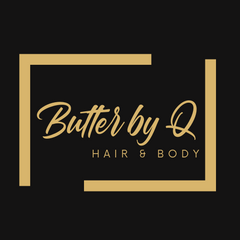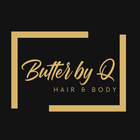Beyond Steroids: A Natural Alternative for Eczema & Topical Steroid Withdrawal
When our daughter was diagnosed with eczema, her pediatric dermatologist wasted no time prescribing steroid eczema creams. Like many other parents, we used them. Can you imagine our horror when we noticed discoloration and hypopigmentation all over the areas where we applied the prescription steroid cream?
We quickly learned that skin discoloration was common with topical steroids, but it was the least of our worries. We read jarring stories and saw images of people suffering from a little-known condition called topical steroid addiction (TSA) or topical steroid withdrawal (TSW).
We knew there was a better, safer natural baby eczema treatment. Let's explore topical steroid addiction and the natural eczema treatments we found to be most effective.
What Is Topical Steroid Withdrawal?

Topical steroid withdrawal (TSW), also known as topical steroid addiction or Red Skin Syndrome, can occur in individuals with eczema or anyone who uses potent topical steroids for extended periods. As the name suggests, topical steroid addiction is a condition where the skin becomes dependent on steroids. When you stop using topical steroids, it can lead to painful and frustrating symptoms.
What Are Topical Steroids?

The term "topical" means it's applied directly to the skin. Steroids are naturally occurring hormones artificially created for medical use. Topical corticosteroids (TCS) are steroids used to reduce inflammation and treat eczema symptoms.
TCSs mimic the effects of cortisol, a hormone naturally produced by the body to regulate inflammation. When applied to the skin, they reduce the activity of the immune system, which in turn lessens inflammation and itching. Many dermatologists prescribe TCs; milder forms like hydrocortisone are available over the counter.
Are Topical Corticosteroids Safe?
Topical corticosteroids are safe and effective when used in moderation. However, eczema and atopic dermatitis are long-term conditions that may require lifelong treatment. If you are using topical corticosteroids as the primary, long-term treatment for eczema, you may be more likely to develop topical steroid addiction. If this occurs, the symptoms you experience when stopping the steroids can be worse than the original conditions.
What Are the Symptoms of Red Skin Syndrome?

Topical steroid withdrawal (TSW), also known as Red Skin Syndrome, manifests through a variety of uncomfortable skin and body-wide symptoms. While the intensity and duration of these signs differ for each person, they commonly include:
- Redness and Flushing: The affected skin becomes persistently red and flushed, often appearing much redder than usual and sensitive to touch.
- Burning and Stinging: Many experience a burning or stinging sensation in the affected areas, which can be severe and cause significant discomfort.
- Intense Itching: Severe itching is a hallmark symptom of TSW, often disrupting daily life and sleep. It may lead to emotional distress.
- Skin Dryness and Shedding: The skin becomes excessively dry and flaky, leading to peeling and the appearance of raw skin underneath.
- Skin Thinning: Prolonged use of topical corticosteroids can cause the skin to thin and become fragile.
- Inflammation & Swelling: Inflammation may occur in the face and other body areas, especially in the early stages.
- Papules and Pustules: Some individuals develop small or pus-filled bumps on the affected skin.
- Skin Peeling, Cracking, and Fissuring: The skin may become so dry that it cracks and becomes vulnerable to infection.
- Emotional Distress: The severity of TSW symptoms can lead to significant emotional distress, including anxiety and depression.
The duration and intensity of these symptoms can vary based on factors such as the strength and length of time topical corticosteroids were used.
Treat Eczema Naturally & Prevent Topical Steroid Withdrawal

The key to preventing topical steroid withdrawal is to use topical corticosteroids as little as possible. This means discovering effective alternative eczema therapies. It starts with understanding eczema. People with eczema have damaged skin barriers that promote the overgrowth of bacteria. The bacterial overgrowth triggers an immune response that releases chemicals that cause irritation and skin itchiness.
Understanding this, it's best to target eczema at the source: the damaged skin barrier. Look for potential non-steroid eczema remedies that can reinforce your skin barrier and keep your skin as moisturized as possible.
While you have no shortage of options, we've found that high-ceramide, thicker eczema salves can work wonders, like our Eczema Balm. It includes premium, high-ceramide ingredients, such as jojoba oil and rosehip oil, that provide many benefits to those suffering from eczema:
- Reduce reliance on potentially addictive steroids,
- Relieve eczema symptoms,
- Strengthen compromised skin barrier
- Reduce inflammation
- Restore damaged skin
- Alleviate hyperpigmentation
- And more.
This all-natural eczema balm is our first line of defense against eczema, and breakouts rarely require additional treatment.
How to Reduce the Likelihood of Developing Topical Steroid Addiction?

After we noticed the skin discoloration, we became committed to finding a safer, natural alternative primary treatment for our daughter's eczema. Since then, we have kept steroids on hand in the event of a severe flareup due to something she ate or stress (yes, a five-year-old can have eczema stress flareups). Fortunately, we haven’t had to apply topical steroids in over four years, and we know it’s because of how the Eczema Balm nourishes her skin. Here's our plan of action.
Speak to a Dermatologists
Nothing replaces the expertise of a medical professional who specializes in skincare. We regularly meet with her pediatric dermatologist and have candid discussions about her skin and our courses of action. In addition to topical steroids on hand, we also have a prescription antihistamine on hand.
Use the Weakest Strength
Topical corticosteroids come in different strengths. Stronger ones are for severe conditions, while milder ones are for less severe issues. Using the weakest effective TCS can help reduce side effects. We always start with OTC hydrocortisone.
Don't Over Use
Use topical corticosteroids intermittently, not continuously. This "pulse therapy" approach involves short treatment periods with breaks to check your skin's progress.
Avoid Using Steroids on Sensitive Areas
Limit topical steroid use on sensitive areas like your face, groin, and armpits. These areas are more prone to side effects, especially with more potent TCS.
Closely Monitor Your Skin
Keep an eye on your skin during topical steroid treatment. Tell your doctor immediately if your condition worsens or you experience side effects. Remember, early action can prevent further problems.
What Makes Butter by Q's Eczema Balm So Effective?
Our eczema balm starts with premium, plant-based shea butter. Then, we add two exclusive ingredients that are scientifically proven to help reinforce the skin barrier and alleviate eczema symptoms.
Jojoba Oil Helps Sooth and Heal Irritated Skin
Jojoba oil's beneficial properties can help soothe and heal irritated skin, especially for people suffering from eczema and topical steroid withdrawal. Here's why these oils are particularly effective:
- Mimics Skin's Natural Oils: Jojoba oil resembles the natural sebum produced by the skin, which helps balance oil production and maintain moisture without clogging pores.
- Anti-Inflammatory Properties: It has anti-inflammatory effects that can reduce swelling and redness, common symptoms in eczema and TSW.
- Moisturizing and Hydrating: Jojoba oil is an excellent moisturizer, providing long-lasting hydration and creating a protective barrier that prevents moisture loss, which is crucial for dry, irritated skin.
- Rich in Vitamins and Minerals: It contains vitamin E, B-complex vitamins, and minerals like zinc and copper that support skin repair and regeneration.
- Non-Comedogenic: It doesn't clog pores, making it suitable for all skin types, including sensitive and acne-prone skin.
Rosehip Oil Features Critical Skin Nutrients
Like jojoba oil, rosehip is another safe and natural oil proven to help with eczema and TSW symptoms.
- Rich in Essential Fatty Acids: It contains high levels of omega-3 and omega-6 fatty acids, which help to rebuild and strengthen the skin barrier, essential for eczema and TSW healing.
- High in Antioxidants: Rich in vitamins A, C, and E, which help to protect the skin from oxidative stress, reduce inflammation, and promote healing.
- Regenerative Properties: Vitamin A (retinoids) in rosehip oil can promote skin cell regeneration and improve skin texture, which is beneficial for healing damaged skin.
- Moisturizing and Nourishing: Provides deep hydration and helps to lock in moisture, improving skin elasticity and reducing the appearance of scars and fine lines.
- Anti-Inflammatory and Calming: Has natural anti-inflammatory properties that soothe irritated skin, reduce redness, and calm itching and discomfort.
Try Butter by Q's Eczema Balm — A Natural, Safer Eczema Remedy

Don't let eczema or TSW control your life. Break free from the cycle of steroids and discover the soothing, natural relief of Butter by Q's Eczema Balm. Our Eczema Balm is infused with potent botanical extracts and nourishing oils like jojoba and rosehip. It's specially formulated to strengthen your skin's natural barrier, reduce inflammation, and alleviate the discomfort of eczema and TSW. Experience the healing power of nature and restore your skin's health.
Try Butter by Q's Eczema Balm today and discover a gentler, safer path to healthier skin.

